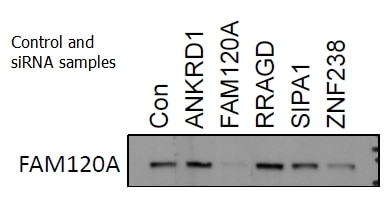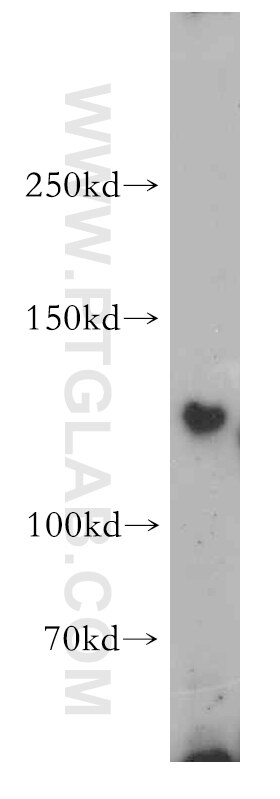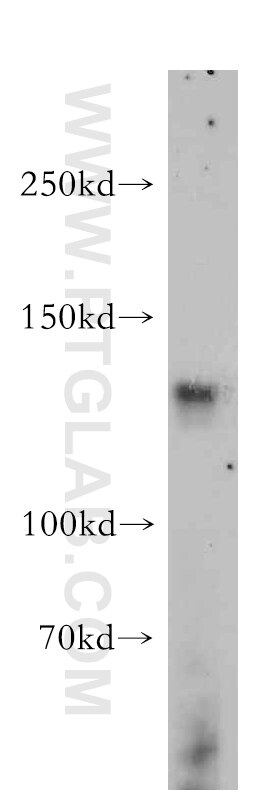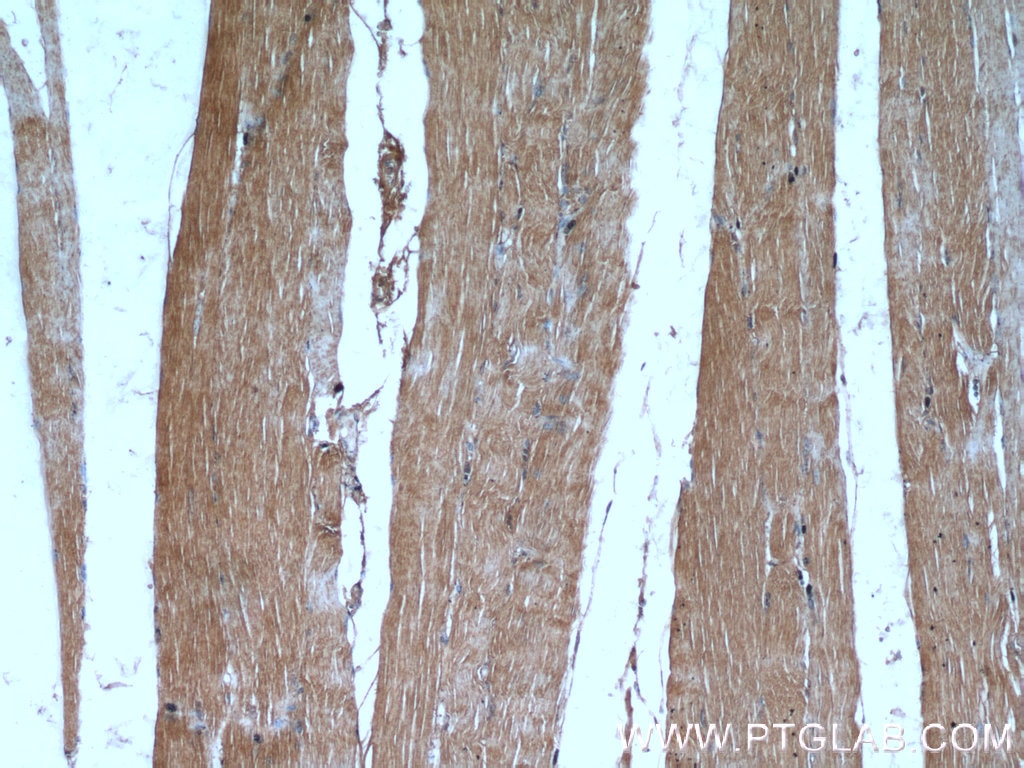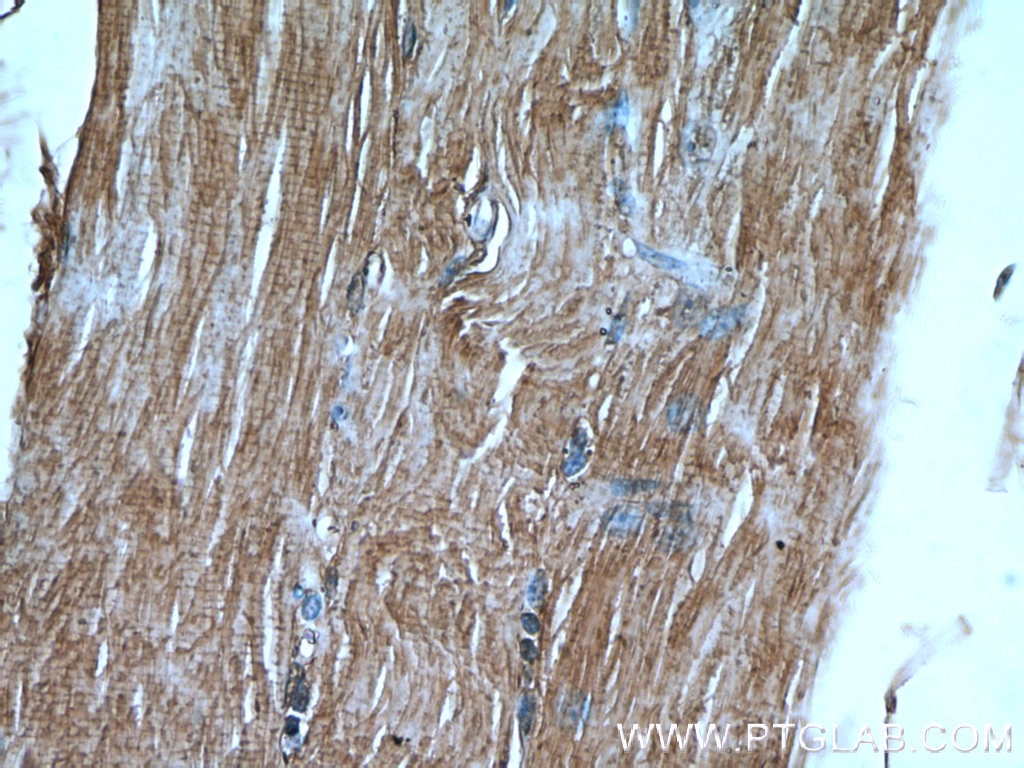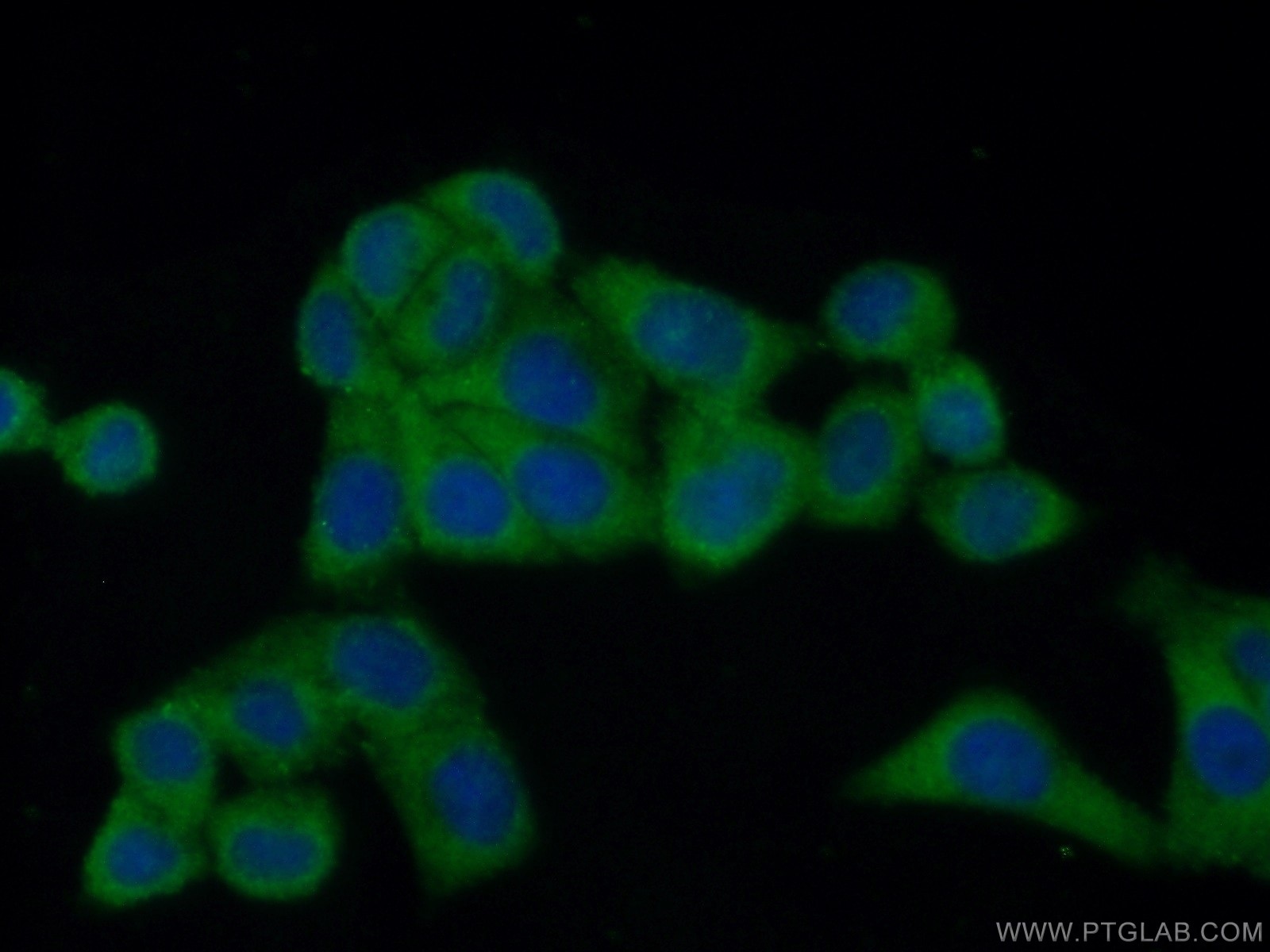- Featured Product
- KD/KO Validated
FAM120A Polyklonaler Antikörper
FAM120A Polyklonal Antikörper für IF, IHC, WB,ELISA
Wirt / Isotyp
Kaninchen / IgG
Getestete Reaktivität
human, Maus, Ratte
Anwendung
WB, IHC, IF,ELISA
Konjugation
Unkonjugiert
Kat-Nr. : 21529-1-AP
Synonyme
Galerie der Validierungsdaten
Geprüfte Anwendungen
| Erfolgreiche Detektion in WB | HEK-293-Zellen, siRNA-Zellen |
| Erfolgreiche Detektion in IHC | humanes Skelettmuskelgewebe Hinweis: Antigendemaskierung mit TE-Puffer pH 9,0 empfohlen. (*) Wahlweise kann die Antigendemaskierung auch mit Citratpuffer pH 6,0 erfolgen. |
| Erfolgreiche Detektion in IF | HepG2-Zellen |
Empfohlene Verdünnung
| Anwendung | Verdünnung |
|---|---|
| Western Blot (WB) | WB : 1:500-1:2000 |
| Immunhistochemie (IHC) | IHC : 1:20-1:200 |
| Immunfluoreszenz (IF) | IF : 1:50-1:500 |
| It is recommended that this reagent should be titrated in each testing system to obtain optimal results. | |
| Sample-dependent, check data in validation data gallery | |
Produktinformation
21529-1-AP bindet in WB, IHC, IF,ELISA FAM120A und zeigt Reaktivität mit human, Maus, Ratten
| Getestete Reaktivität | human, Maus, Ratte |
| Wirt / Isotyp | Kaninchen / IgG |
| Klonalität | Polyklonal |
| Typ | Antikörper |
| Immunogen | FAM120A fusion protein Ag16149 |
| Vollständiger Name | family with sequence similarity 120A |
| Berechnetes Molekulargewicht | 1118 aa, 122 kDa |
| Beobachtetes Molekulargewicht | 125 kDa |
| GenBank-Zugangsnummer | BC111736 |
| Gene symbol | FAM120A |
| Gene ID (NCBI) | 23196 |
| Konjugation | Unkonjugiert |
| Form | Liquid |
| Reinigungsmethode | Antigen-Affinitätsreinigung |
| Lagerungspuffer | PBS mit 0.02% Natriumazid und 50% Glycerin pH 7.3. |
| Lagerungsbedingungen | Bei -20°C lagern. Nach dem Versand ein Jahr lang stabil Aliquotieren ist bei -20oC Lagerung nicht notwendig. 20ul Größen enthalten 0,1% BSA. |
Protokolle
| Produktspezifische Protokolle | |
|---|---|
| WB protocol for FAM120A antibody 21529-1-AP | Protokoll herunterladen |
| IHC protocol for FAM120A antibody 21529-1-AP | Protokoll herunterladen |
| IF protocol for FAM120A antibody 21529-1-AP | Protokoll herunterladen |
| Standard-Protokolle | |
|---|---|
| Klicken Sie hier, um unsere Standardprotokolle anzuzeigen |
